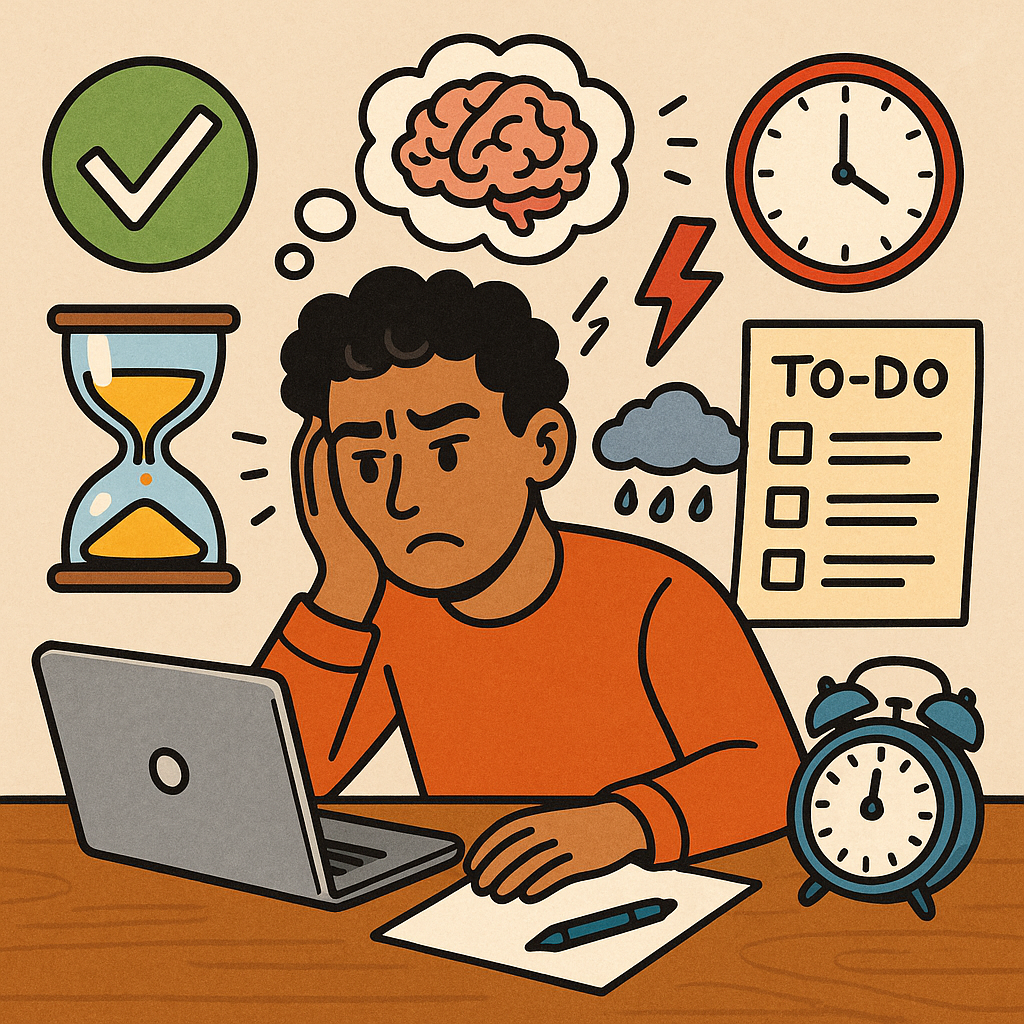Time management is no longer enough. Emerging trends show that energy, attention, and emotional control matter just as much—if not more—for getting high-quality work done in 2025. That’s why why your productivity isn’t just about time management is a critical mindset shift worth embracing.

The Rise of Energy Management Over Time Management
The conversation has shifted from “how do I fit more tasks in my day?” to “how do I align tasks with my energy peaks?”
- Harvard Business Review emphasizes energy, not time, as the true currency of high performance—workers who focus on energy recharge outperform those who simply log hours.
- A recent overview found that employees adept at energy management report 50% higher engagement and 21% more productivity.
- Practical studies reinforce this: productivity rises when people schedule intense work during high-energy periods and reserve rest in between, mimicking athletes’ training cycles.
This shift means that simply seeing more hours doesn’t guarantee more output—what matters is how energized and present you are during those hours.
Attention Management: The Digital Distraction Crisis
Time-blocking gets derailed by attention disruptions—pings, open tabs, and multitasking kill focus.
- Research shows knowledge workers get interrupted every 11 minutes and can spend up to 30 minutes regaining focus.
- Concepts like “continuous partial attention” describe our fractured focus, which boosts stress and impairs decision-making.
- Modern strategies now include mental prep, distraction blockers, and designing environments that reduce cognitive load—transforming time-managed blocks into genuine focus zones.
Being present—not just present in time—is what drives deep concentration.
Flow State: Mastery Over the Clock
The concept of “flow”—complete immersion in a task—has become central to productivity discourse.
- Being in flow can boost output by up to 500% according to McKinsey’s decade-long study.
- Mihály Csíkszentmihályi’s research shows flow improves both the quality and speed of complex work.
- Nations and companies are now investing in “deep work” environments and leadership practices that support uninterrupted attention.
Why your productivity isn’t just about time management—it’s about entering flow during your most important work.
Building a Productivity System That Works
To make energy, attention, and flow practical—especially in hybrid/remote work—follow this structured approach:
1. Identify Your Energy and Attention Peaks
- Track your day: mark times when you feel energetic vs. drained.
- Reserve peak hours (“power hours”) for deep or strategic tasks.
2. Schedule with Energy in Mind (Not Just Time)
- Use “energy calendars”: pair high-energy slots with demanding work, and low-energy ones with routine tasks.
- Include short recovery windows—breaks, brief walks, healthy snacks.
3. Block Distractions for Deep Focus
- Use attention-management tools: notification silencing, full‑screen apps, browser blockers .
- Set boundaries: protect your energy windows from meetings or email.
4. Design Work for Flow
- Break tasks into clear, meaningful goals with built-in feedback loops.
- Ensure challenging tasks are aligned with your skillset to trigger flow.
5. Prioritize Emotional and Digital Well‑Being
- Regularly check in with yourself—evaluate stress, focus, fulfillment .
- Address digital fatigue via tech breaks and asynchronous communication.
6. Reflect, Adjust, Repeat
- Weekly reviews help you observe productivity patterns: what energizes you, disrupts your flow.
- Adapt your system: reassign tasks, tweak break schedules, recalibrate calendar blocks.
Sample Day Optimized Beyond Time Management
| Time | Focus Type | Activity |
|---|---|---|
| 8 – 10 AM | Deep Work / Flow | Complex projects; critical writing |
| 10–10:20 AM | Recharge | Stretch, fresh air, hydration |
| 10:20–12 PM | Moderate Focus | Collaboration, planning, focused meetings |
| 12–1 PM | Full Break | Lunch, short walk, tech-free rest |
| 1–3 PM | Shallow Work | Admin tasks, emails, calls |
| 3–3:15 PM | Active Break | Physical movement, snack |
| 3:15–5 PM | Deep-ish Work | Small creative bursts, analysis |
| After 5 PM | Digital Downtime | Calls with family, relaxation |
Why It Works
- Energy-aligned work ensures high-effort tasks get tackled when you’re primed.
- Attention management cuts time lost to interruptions.
- Flow-oriented structure amplifies quality and speed.
- Emotional safeguards reduce burnout and enhance creativity.
Together, they form a productivity system that’s inherently resilient, human-centered, and sustainable.
Final Thoughts
Time isn’t everything—it’s a canvas. The real art lies in painting it with energy, focus, and presence. In 2025 and beyond, to answer why your productivity isn’t just about time management, you must rethink productivity as a holistic skill. It’s a performance cycle of energy peaks, laser-focused bursts, meaningful engagement, and intentional recovery.
Invest in your energy, craft attention architecture, and design for flow. Not just to get more done—but to do work that truly matters.
Sources
Janessatan. Three Productivity Strategies Better Than Time Management. Medium, 2025. Available at: https://medium.com
HabitStrong. Productivity Is Not Just Time Management. HabitStrong.com, 2022. Available at: https://www.habitstrong.com
Steinhorst, C. The Fallacy Of Time Management: Why It’s Time To Rethink Productivity. Forbes, January 23, 2024. Available at: https://www.forbes.com






